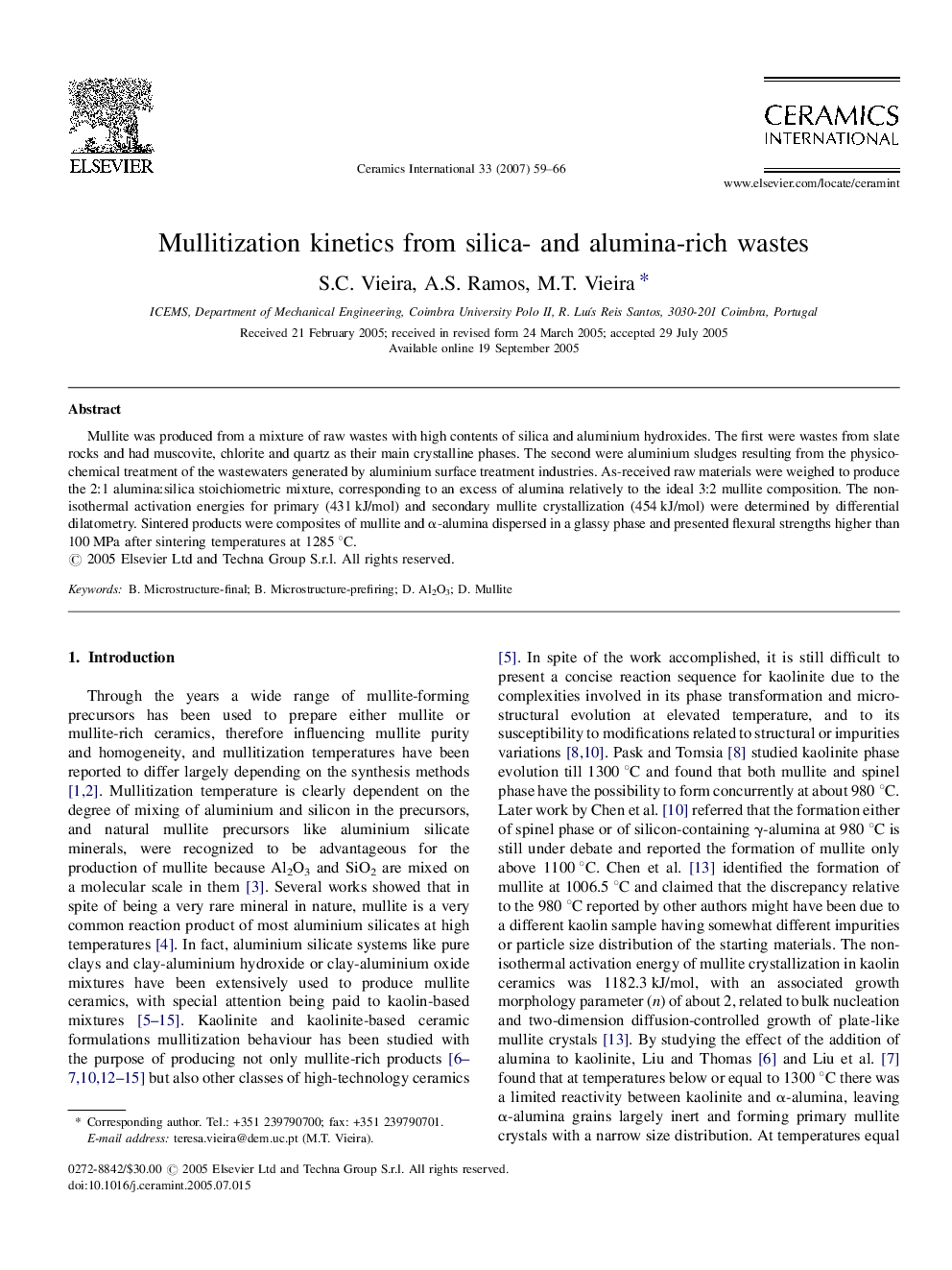| Article ID | Journal | Published Year | Pages | File Type |
|---|---|---|---|---|
| 1464452 | Ceramics International | 2007 | 8 Pages |
Mullite was produced from a mixture of raw wastes with high contents of silica and aluminium hydroxides. The first were wastes from slate rocks and had muscovite, chlorite and quartz as their main crystalline phases. The second were aluminium sludges resulting from the physico-chemical treatment of the wastewaters generated by aluminium surface treatment industries. As-received raw materials were weighed to produce the 2:1 alumina:silica stoichiometric mixture, corresponding to an excess of alumina relatively to the ideal 3:2 mullite composition. The non-isothermal activation energies for primary (431 kJ/mol) and secondary mullite crystallization (454 kJ/mol) were determined by differential dilatometry. Sintered products were composites of mullite and α-alumina dispersed in a glassy phase and presented flexural strengths higher than 100 MPa after sintering temperatures at 1285 °C.
